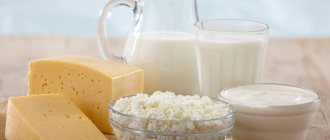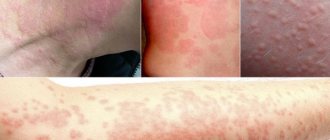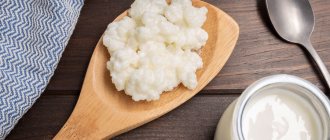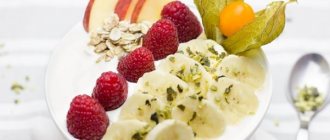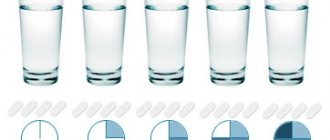Gluten-free diet - food list
Although gluten is safe for most people, people with conditions such as celiac disease or gluten sensitivity should avoid consuming it to prevent adverse health effects (1).
Many products are made with ingredients that contain gluten, so it is important that those who cannot consume it check ingredient labels carefully (2).
Here is a list of 54 gluten-free foods that you can include in your diet.
1-11. Whole grains
When purchasing whole grains, it is important to double check labels. Even gluten-free whole grains can be contaminated with gluten, especially if they are processed in the same facility as gluten-containing foods (3).
For example, oats are often processed in facilities that also process wheat, which can lead to cross-contamination. For this reason, you should make sure that the oats you purchase are certified gluten-free (4).
Gluten-Free Whole Grains:
- Quinoa
- Brown rice
- Wild rice
- Buckwheat
- Sorghum
- Tapioca
- Millet
- Amaranth
- Teff
- Arrowroot
- Oats
Grains to Avoid:
- Wheat, all varieties (whole wheat, bulgur, farro, farina, durum wheat, kamut, spelled, etc.)
- Rye
- Barley
- Triticale
These gluten-containing grains are often used to make products such as bread, baked goods, pasta, cereals, baked goods and snacks.
What is gluten?
Gluten is an organic complex protein. This element is a component of many plants of the cereal family. Thanks to its ability to retain carbon dioxide produced by yeast, it provides the dough with a rise. This quality of gluten has provided it with a wide range of applications in the production of various products. It not only adds tenderness to the structure of the product, but also adds a pleasant aroma and taste, and extends shelf life.
12-26. Fruits and vegetables
The gluten free food list includes all fresh fruits and vegetables as they are naturally gluten free. However, some processed fruits and vegetables may contain gluten, which is sometimes added for flavoring or as a thickening agent (3).
Gluten-containing ingredients that may be added to processed fruits and vegetables include:
- hydrolyzed wheat protein
- modified food starch
- malt
- maltodextrin
Fruits and vegetables you can eat:
While the list below is not exhaustive, it does provide some examples of fresh fruits and vegetables that you can use in your gluten-free diet.
- Citrus fruits, including oranges and grapefruits
- Bananas
- Apples
- Berries
- Peaches
- Pears
- Cruciferous vegetables, including cabbage, cauliflower and broccoli
- Green leafy vegetables such as spinach, kale and chard
- Starchy vegetables such as potatoes, corn and eggplant
- bell pepper
- Mushrooms
- Bulb onions
- Carrot
- Radish
- Green bean
Fruits and vegetables to double check:
- Canned fruits and vegetables : Canned with sauces that contain gluten. Fruits and vegetables canned in water or natural juices are probably gluten-free.
- Frozen fruits and vegetables : Sometimes contain added flavors and sauces that contain gluten. Frozen fruits and vegetables without additives are gluten-free.
- Dried fruits and vegetables : may contain gluten-containing ingredients. Regular, unsweetened dried fruits and vegetables are gluten-free.
- Pre-cut fruits and vegetables : May be cross-contaminated with gluten depending on where they were prepared.
Gluten-free diet menu for a week
Meals on such a diet should be divided, about 5-6 times a day: three main meals and two or three snacks. The standard “plate rule” is also appropriate here: half should be filled with vegetables, the other half with meat and complex carbohydrates. This diet will provide the body with nutrients, vitamins and minerals.
Gluten-free dishes can be suitable for the whole family; if prepared correctly, they will taste the same as regular ones. The main thing is to use only approved products.
The menu below is an example. It can be adjusted taking into account individual preferences, allergies or individual intolerances.
Monday
- Breakfast: a serving of rice porridge cooked in milk, you can add some fresh berries.
- Lunch: sandwich on gluten-free bread with butter, fresh unflavored tea.
- Lunch: vegetable puree soup with broccoli and low-fat cheese, chicken with a side dish of potatoes, vegetable salad.
- Afternoon snack: fruit salad with gluten-free yoghurt.
- Dinner: wheat porridge with a side dish of nuts or stewed vegetables.
Tuesday
- Breakfast: cottage cheese with honey or sugar, fruit.
- Lunch: rice or any cereal bread, tea.
- Lunch: chicken soup with vegetables, salad.
- Afternoon snack: yogurt with dietary gluten-free cookies.
- Dinner: cottage cheese casserole, supplemented with any fruit.
Wednesday
- Breakfast: omelet or hard-boiled eggs, sandwich with cheese.
- Lunch: a handful of dried fruits, tea.
- Lunch: any soup with fresh herbs, chicken with a side dish of buckwheat.
- Afternoon snack: cheesecakes on rice flour with honey and berries.
- Dinner: chicken baked in foil with vegetables.
Thursday
- Breakfast: special cornflakes (they must be gluten-free) with the addition of milk, kefir or yogurt.
- Lunch: two boiled eggs, tea.
- Lunch: borscht, chicken and vegetable salad.
- Afternoon snack: a portion of berries or a fruit drink made from them, diet cookies.
- Dinner: meatballs, buckwheat porridge.
Friday
- Breakfast: Pancakes made with gluten-free flour and honey.
- Lunch: a glass of kefir or yogurt and cookies.
- Lunch: chicken cutlets with a side dish of rice, vegetable salad.
- Afternoon snack: a portion of any nuts, any fruit.
- Dinner: stewed fish with vegetables, mushrooms.
Saturday
- Breakfast: cottage cheese with honey and fruit.
- Lunch: carrot salad with slices of cheese and a handful of nuts.
- Lunch: vegetable soup with lentils, stewed chicken with vegetable salad.
- Afternoon snack: tea with gluten-free cookies, any fruit.
- Dinner: potato pancakes, but use rice flour instead of wheat flour.
Sunday
- Breakfast: scrambled eggs or omelet with any vegetables added.
- Lunch: a sandwich of gluten-free bread, lettuce, tomatoes, cheese or a piece of seasoned chicken.
- Lunch: fish soup, chicken cutlets with a side dish of rice, any vegetables.
- Afternoon snack: a small portion of nuts (20-30 grams), any fruit
- Dinner: fish stewed with vegetables.
27-32. Squirrels
Many foods contain protein, including animal and plant products. Most are naturally gluten-free (3).
However, gluten-containing ingredients such as soy sauce, flour and malt vinegar are often used as fillers or flavorings. They can be added to sauces, dressings and marinades, which are usually combined with protein products.
Gluten Free Protein Products:
- Legumes (beans, lentils, peas, peanuts)
- Nuts and seeds
- Red meat (fresh beef, pork, lamb)
- Poultry (fresh chicken, turkey)
- Seafood (fresh fish, scallops, shellfish)
- Traditional soy products (tofu, tempeh, edamame, etc.)
Protein foods to double check:
- Processed meat products, such as sausages, sausages, semi-finished products (dumplings, cutlets, etc.), sausage and bacon
- Meat substitutes such as vegetarian products
- Ground meat
Protein foods to avoid:
- Any meat, poultry or fish that has been breaded
- Protein products to which wheat-based soy sauce has been added
- Seitan
33-39. Dairy
Most dairy products are naturally gluten-free. However, dairy products with added flavors and additives should always be double checked for gluten (3).
Some common gluten-containing ingredients that may be added to dairy products include thickeners, malt, and modified food starch.
Gluten-free dairy products:
- Milk
- Butter and ghee
- Cheese
- Cream
- Cottage cheese
- Sour cream
- Yogurt
Dairy products to double check:
- Flavored milk and yoghurts
- Processed cheese products such as cheese sauces and processed cheese
- Ice cream that is sometimes mixed with gluten-containing additives
40-44. Fats and oils
Fats and oils are naturally gluten-free. In some cases, gluten-containing additives may be mixed with fats and oils for flavoring and thickening.
Gluten-free fats and oils:
- Butter and ghee
- Olives and olive oil
- Avocado and avocado oil
- Coconut oil
- Vegetable oils, including sunflower oil, sesame oil, corn oil, and canola oil
Fats and oils to double check:
- Oils with added flavors or spices
- Spreads
45-51. Beverages
The list of gluten-free products includes gluten-free drinks. There are several types of gluten-free drinks that you will enjoy.
However, some drinks are mixed with additives that contain gluten as an ingredient. Additionally, some alcoholic beverages are made using malt, barley, and other grains that contain gluten and should be avoided during a gluten-free diet (5).
Gluten-free drinks:
- Water
- 100% fruit juice
- Coffee
- Green tea or black tea
- Some alcoholic beverages, including wine, ciders and beer, made from gluten-free grains such as buckwheat or sorghum
- Sports, carbonated and energy drinks
- Lemonade
Please note that while these drinks are gluten-free, most are best consumed in moderation due to the added sugar and alcohol content they contain.
Drinks to double check:
- Any drink with added flavorings or adulterants, such as coffee coolers
- Distilled liquids such as vodka, gin and whiskey, even if they are labeled "Gluten Free" as they are known to cause a reaction in some people
- Pre-mixed cocktails
Drinks to avoid:
- Beer, ale and lager made from grains containing gluten
- Undistilled liquids
- Other malt drinks
The essence of a gluten-free diet
A special diet based on the introduction of gluten-free products has its own principles, features, and rules:
- Gluten-free products help improve digestion, peristalsis, and the functioning of the gastrointestinal tract. That is why they are the basis of nutrition. By now, you can find a huge number of such products on the market, there is even gluten-free alcohol;
- Diet dishes are prepared with a minimum amount of oil; it is advisable to use a grill or a special frying pan that does not require the addition of fat;
- Gluten-free food should be the basis of the diet. Based on the list of permitted and prohibited products, you can create a menu yourself or use a ready-made one. You can find recipes for main courses and appetizers on the Internet.
This diet will benefit patients with celiac disease, as well as people with symptoms of allergies or individual intolerances. In all other cases, it can, on the contrary, cause harm. Thoughtless exclusion of foods from the diet can cause a lack of vitamins, minerals, and nutrients. Therefore, to lose weight, it is better to use a time-tested technique based on proper nutrition, changing eating habits, and psychotherapy. Only this approach will protect the patient from breakdowns, depression, other psycho-emotional and health disorders, and prevent negative consequences.
52-54. Spices, sauces and seasonings
Spices, sauces and seasonings often contain gluten.
Although most spices, sauces and seasonings are naturally gluten-free, gluten-containing ingredients are added to them as emulsifiers, stabilizers or flavor enhancers.
Some common gluten-containing ingredients added to spices, sauces and seasonings include:
- modified food starch
- maltodextrin
- malt
- Wheat flour
Gluten Free Condiments, Sauces and Condiments:
- Tamari sauce
- Coconut sauce with amino acids
- White vinegar, distilled vinegar and apple cider vinegar
Spices, sauces and seasonings to double check:
- Ketchup and mustard
- Worcestershire sauce
- Tomato sauce
- Seasoning and pickles
- Barbecue sauce
- Mayonnaise
- Salad dressing
- Tomato paste
- Dry spices
- Salsa sauce
- Bouillon cubes
- Marinades
- Rice vinegar
Spices, sauces and condiments to avoid:
- Wheat based soy sauce
- Teriyaki sauce
- Malt vinegar
Ingredients to Avoid
Here is a list of ingredients and food additives that may indicate that a product contains gluten:
- Modified starch and maltodextrin (if made from wheat, this will be stated on the label)
- Malt ingredients including malt vinegar, malt extract and malt syrup
- Stabilizers
- Soy sauce or teriyaki
- Wheat ingredients such as wheat protein and wheat flour
- Emulsifiers (will be listed on the label)
If you are unsure whether a product contains gluten, it is recommended that you contact the manufacturer to check.
Gluten-free diet for weight loss
If you need to lose weight through this diet, it is also recommended to count the number of calories consumed and burned, the ratio of proteins, fats, carbohydrates:
- It is necessary to calculate the daily calorie intake using one of the formulas below and subtract 10-15% from it - this is exactly how much is needed for weight loss:
- formula for men: 66 + (13.7 x weight in kg) + (5 x height in cm) - (6.8 x age);
- formula for women: 655 + (9.6 x weight in kg) + (1.8 x height in cm) - (4.7 x age);
To calculate, you can use an online calculator, a smartphone application, or special tables.
Changing your diet in a healthy direction without psychotherapy is almost impossible. After all, only something fundamental and stable can be considered a genuine change, and not a random temporary deviation. Well, humanity has not yet come up with anything more reliable than personal principles, beliefs, ideas.
Summarize
- If you're avoiding gluten, there are many foods you can choose from to create a balanced diet.
- Many healthy foods are naturally gluten-free. These include fruits, vegetables, fresh meats, fish and poultry, legumes, some whole grains, dairy products and oils.
- Wheat, rye and barley are the main foods to avoid when following a gluten-free diet. Gluten is also commonly added to processed foods such as canned and packaged foods.
- Additionally, some grains, such as oats, may be cross-contaminated with gluten, depending on where they were processed.
- A successful gluten-free diet comes down to double-checking the ingredients in your foods, as gluten is often added to foods you wouldn't expect to find it in. Products containing gluten will be labeled as such.
- However, if you focus on eating mostly fresh, whole, gluten-free foods and minimal processed foods, you will have no problems with a gluten-free diet.
Gluten-free diet, Gluten
Gluten intolerance
Unfortunately, not every human body is able to perceive this natural element without negative consequences. In case of individual disorders of the digestive functions of the intestine, gluten intolerance is formed. Its penetration into the body causes the destruction of the villi covering the walls of the small intestine. These negative processes are caused not only by gluten, but also by its analogues: avenin, hordein, etc. Due to damage to the villi, the absorption of nutrients is disrupted, the general condition worsens, and disruptions in the functioning of the stomach occur. Doctors call gluten intolerance celiac disease or celiac enteropathy. Patients need to know the rules of nutrition for this disorder and adhere to a gluten-free diet. This will allow you to completely get rid of negative feelings and symptoms.


